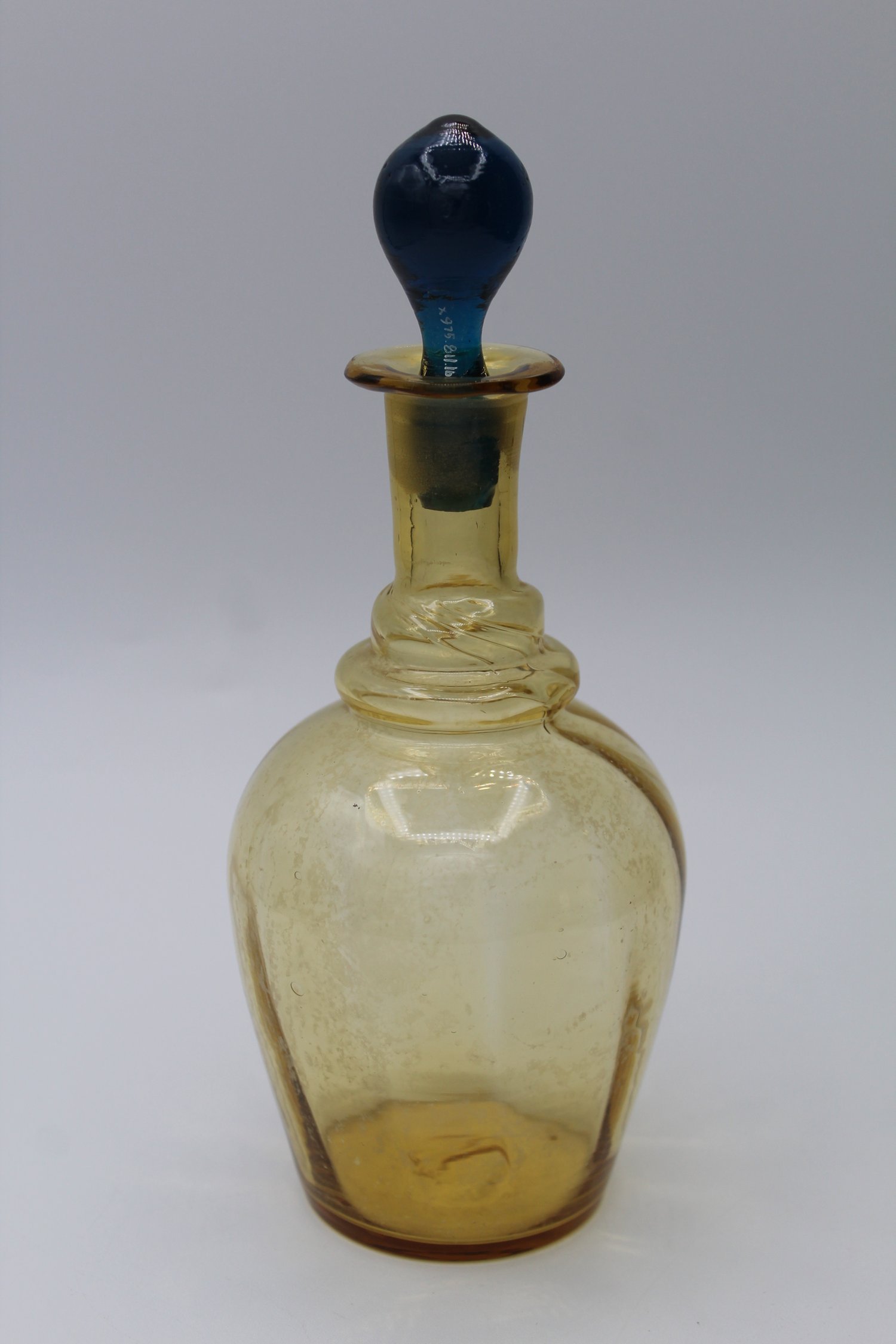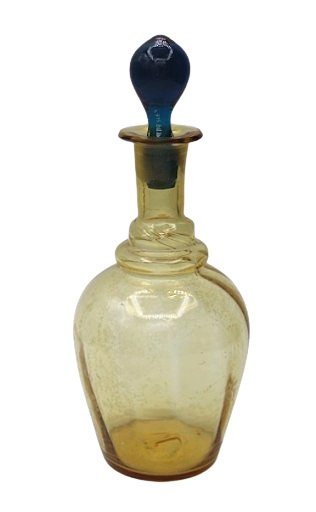
Eyeglasses
Eclectic eyewear and inherited collections
Peggy Woodrow’s interest in glassware and antiques had a surprising connection with her husband’s medical career.
Peggy likely inherited this collection of eyeglasses from her husband, Dr. Art Woodrow.
Dr. William Arthur “Art” Woodrow was an eye, ear, nose, and throat (EENT) specialist and surgeon in Lindsay. He married Peggy in 1944 and died in 1975.
Though records are unclear, these glasses were likely from his collection.
Travelling lens case from Dr. Art Woodrow’s practice. Circa 1930-1975. From Peggy Woodrow’s estate. 21 x 42 x 7 cm. 2022.74.11.1
These glasses are from various dates. Some predate Art’s medical career; others are likely from it.
Case with glasses shown in this exhibit, c. 1930-1975. 4 x 28 x 47 cm. 1993.5.1bbb Glasses are shown in further detail and identified below.
Red leather glasses case from Dr. Art Woodrow’s practice. Circa 1930-1975. 2 x 5 x 13 cm. 1993.5.1ddd
Glasses with brass wire frames. Circa 1900-1975. 11 cm across. 1993.5.1bb
These glasses may have been from Art’s practice. His medical collection includes prescriptions from the same company.
Collecting can take many forms. This exhibit features hobbyist antiques collecting.
Art collected differently. His collection centres around his career and its history and includes both modern equipment from his practice and antiques from unknown sources.
Art’s eyeglass collection also features Peggy’s preferred materials and dates: antique metals and glass.
Perhaps the Woodrows collected or appreciated these antiques together.
Art’s collections show a more work-oriented side of collecting, and possibly Peggy’s influence.
Glasses with partially frosted amber lenses. Circa late 19th century. 12 cm across. 1993.5.1q
Amber glass decanter with replacement blue glass stopper. Circa 1890s. From Peggy Woodrow’s glassware collection. 17 cm tall. 1975.811.1
By today’s standards, these glasses may look like avant-garde statement pieces. In their time, they were purely functional.
Blue lenses were thought to be good for the eyes.
Pince-nez with blue lenses and hairpin attachment. 19th century. 10 cm across. 1993.5.1ss,tt
Before the 20th century, glasses and fashion didn’t quite mesh.
Eyewear was part of a slow trend cycle that didn’t yet follow clothing fashion styles. A certain type of frame could remain popular (or unpopular) for most of a century, with only minor changes.
The most stylish option, especially for upper-class women, was often not wearing glasses, or wearing glasses that least resemble what we wear today, like pince-nez and lorgnettes.
Fashion rules were more rigid than they are now, and glasses were not very stylish.
Wire-rimmed glasses with very thick lenses. 19th-early 20th century. 11 cm across. 1993.5.1x
Fashion often takes inspiration from the past.
Have you seen people wearing glasses like these? Where?
Sunglasses with green lenses. 19th century. 15 cm across. 1993.5.1s
Safety glasses with mesh sides. 19th-early 20th century. 12 cm across. 1993.5.1eee
Sunglasses with blue and green lenses became available in the 1830s and were primarily worn by men, as shown on the left. The goggle-like shape of the glasses on the right, with mesh at the sides and a velvet seal next to the face, would protect the wearer’s eyes from dust, sparks, or debris. This pair may have been used for threshing or welding.

Cat-eye glasses, which Peggy wears here, were created in the 20th century. They show the huge shift in glasses styles in the 20th century: some regard them as the first distinctively feminine kind of eyeglasses.
Detail of Peggy Woodrow at the Kawartha Lakes Museum and Archives, circa 1996. From a group photo. 2009.8.1a
In the 19th century, anything was better than spectacles!
Spectacles with arms were invented in the 1700s and were considered quite unfashionable in the 1800s. This style was invented in 1752. The rings at the end of each arm were tied around the back of the head.
Glasses with hinged temples and circular temple tips. Circa 19th century. 12 cm across. 1993.5.1o
Small folding lorgnette with hinged bridge. Circa 1830s-1890s. 10.5cm across. 1993.5.1b
Lorgnette with long handle. 1890s-early 20th century. 10 cm across; 12 cm handle. 1993.5.1a
Lorgnettes and pince-nez were the most stylish eyewear in the 19th century.
Lorgnettes—a variety of handheld, folding glasses—remained popular with women throughout the 1800s.
They had a surprising final surge in popularity in the 1960s.
Pince-nez were popular with both men and women.
Rimless pince-nez with chains were preferred by women.
Pince-nez sunglasses with flexible nose pads. 19th-early 20th century. 10 cm across. 1993.5.1vv
Rimless pince-nez with chain and hairpin. 19th-early 20th century. 11 cm across. 1993.5.1oo

Although they were likely collected by her husband, we view these glasses as part of Peggy’s collection.
Art’s eyeglasses seem to have made their way into Peggy’s personal collection, which she periodically donated to the museum. She donated this collection of eyeglasses, along with her collection of stereograph cards, in the 1990s.
The museum was likely important to Peggy, as shown by her commitment to volunteering and her repeated donations.
Glasses with brass frames and adjustable paddles. Circa 19th century. 11 cm across. 1993.5.1n
Peggy kept Art’s medical collection until her death. She bequeathed it, and her collection of amber and cranberry glass, to the museum.
Sign from Dr. Art Woodrow’s practice, c.1930-1975. From Peggy Woodrow’s estate. 19 x 52 cm. 2022.74.1
Collections formed by inheritance can have great personal significance to the collector.
(Peggy kept her husband’s medical collection for as long as she lived. It seems to have held great meaning or value to her.)
Inherited collections often take the form of family heirlooms and housewares.
Have you inherited any collections? Do they have personal significance to you?


























